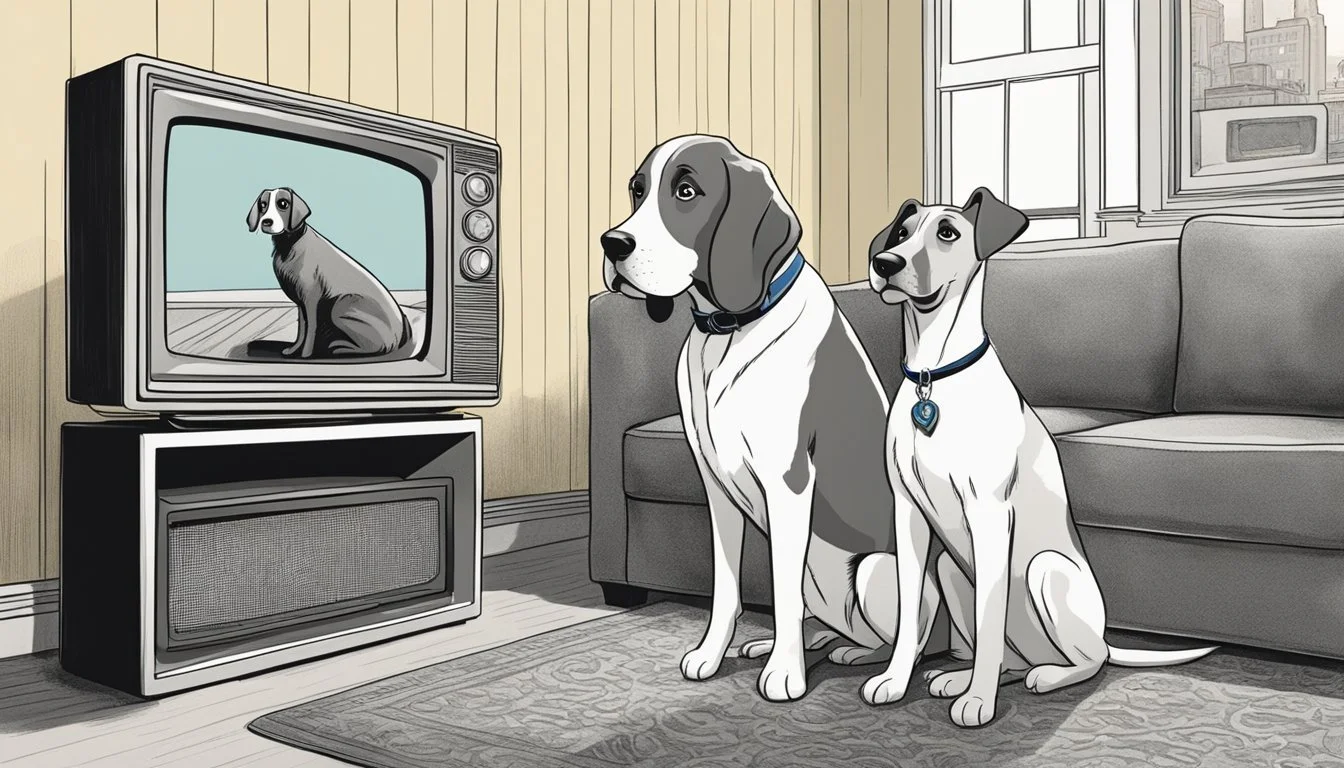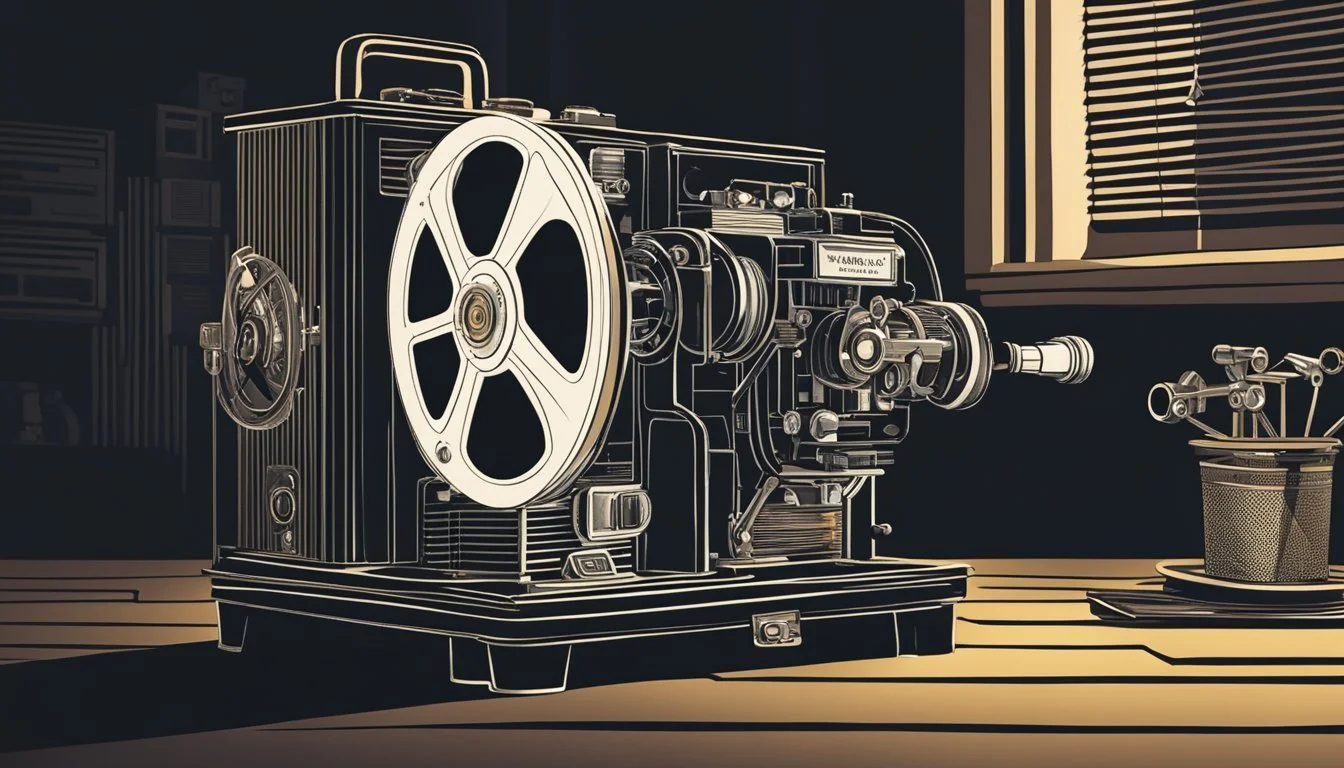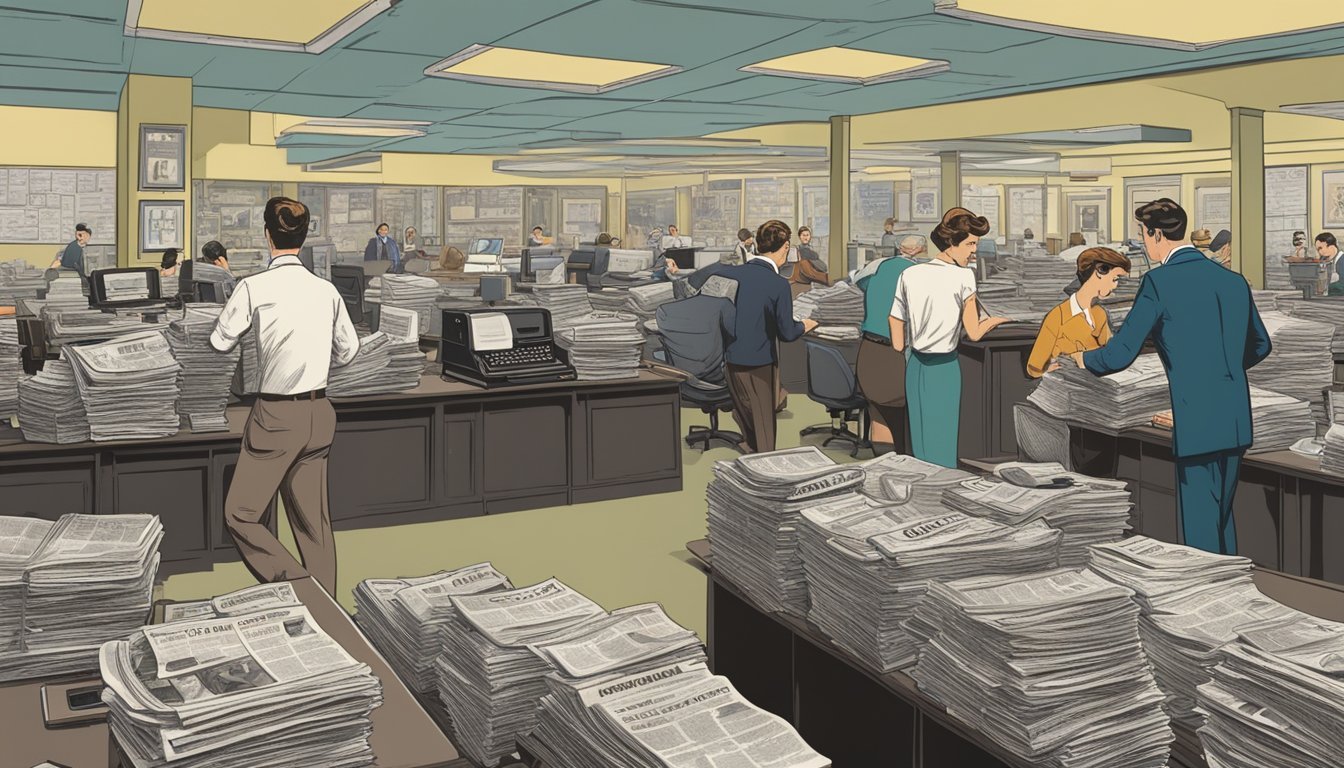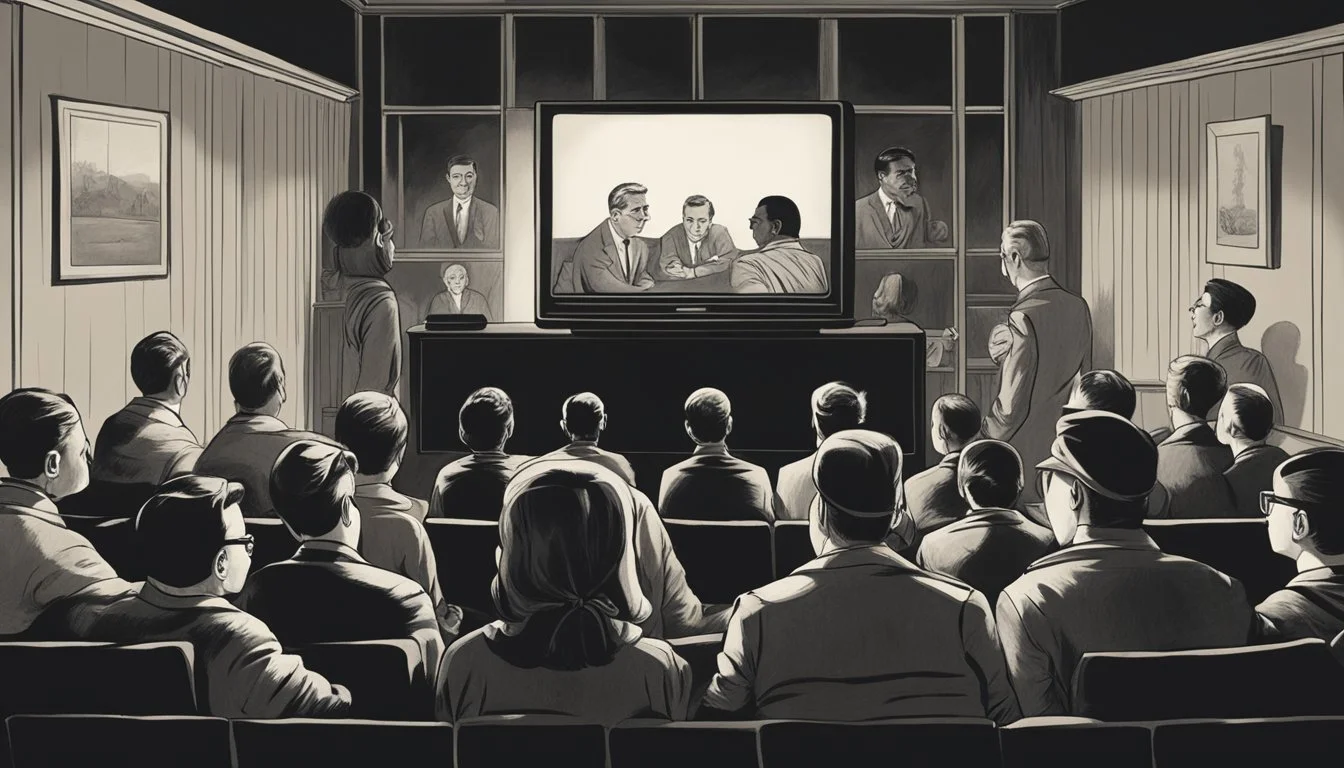Top Documentaries of 1955
Groundbreaking Films That Shaped the Genre
The year 1955 marked a significant period in documentary filmmaking, showcasing a diverse range of subjects and storytelling techniques. From social issues to scientific explorations, documentaries of this era captured the essence of post-war society and emerging global perspectives.
Several notable documentaries from 1955 continue to influence filmmakers and audiences today, offering unique insights into the cultural, political, and artistic landscapes of the mid-20th century. These films not only documented historical events but also pushed the boundaries of visual storytelling, establishing new standards for non-fiction cinema.
1) The Night Holds Terror (1955)
The Night Holds Terror is a crime thriller directed by Andrew L. Stone. It stars Jack Kelly, Hildy Parks, Vince Edwards, and John Cassavetes.
The film is based on a true story about a family taken hostage by criminals. Gene Courtier picks up hitchhiker Victor Gosset, who turns out to be part of a gang of robbers.
When the criminals discover Courtier has little cash, they force him to sell his car. The gang then takes over the family's home, creating a tense hostage situation.
The movie explores themes of fear and survival as the family faces danger from the desperate criminals. It portrays the psychological impact of being held captive in one's own home.
Stone's direction creates a sense of claustrophobia and tension throughout the film. The performances by the cast effectively convey the terror experienced by the victims and the ruthlessness of their captors.
2) Blackboard Jungle (1955)
"Blackboard Jungle" is a groundbreaking social drama film directed by Richard Brooks. The movie tackles issues of juvenile delinquency and urban education in a gritty, realistic manner.
Glenn Ford stars as Richard Dadier, an idealistic new teacher at an inner-city school. He faces violent, unruly students and a resistant faculty as he tries to make a difference.
The film was controversial for its depiction of teenage rebellion and school violence. It sparked debates about education and youth culture in 1950s America.
"Blackboard Jungle" is notable for its use of rock and roll music, particularly Bill Haley & His Comets' "Rock Around the Clock" in the opening credits. This helped popularize the genre among mainstream audiences.
The movie received four Academy Award nominations, including Best Writing and Best Cinematography. It was praised for its bold approach to social issues and strong performances.
"Blackboard Jungle" remains influential for its unflinching portrayal of urban school challenges and its impact on popular culture. More information
3) Mister Roberts
Mister Roberts (1955) is a comedic drama set aboard a U.S. Navy cargo ship during World War II. The film stars Henry Fonda as Lieutenant Doug Roberts, a cargo officer longing for combat duty.
James Cagney portrays the ship's tyrannical captain, while William Powell plays the wise ship's doctor. Jack Lemmon rounds out the main cast as the lazy Ensign Pulver, a role that earned him an Academy Award for Best Supporting Actor.
The film explores themes of duty, leadership, and camaraderie among the crew. It balances humor with poignant moments as Roberts struggles with his desire to leave the ship for more active service.
Directed by John Ford and Mervyn LeRoy, Mister Roberts was adapted from a popular Broadway play. The movie retains much of the stage production's wit and character dynamics.
Despite being set during wartime, the film focuses more on the day-to-day life and interpersonal conflicts aboard the USS Reluctant. This approach offers a unique perspective on military service during World War II.
4) The Dam Busters (1955)
The Dam Busters stands out as a remarkable documentary-style film from 1955. Directed by Michael Anderson, it depicts the true story of Operation Chastise during World War II.
The film stars Richard Todd as Wing Commander Guy Gibson and Michael Redgrave as scientist Barnes Wallis. It focuses on the development of the bouncing bomb and the subsequent raid on German dams.
The Dam Busters meticulously recreates the planning and execution of the daring mission. It showcases the ingenuity of British engineers and the bravery of RAF pilots who carried out the attack.
The film's attention to technical details and use of actual RAF personnel as extras lends it authenticity. Its blend of drama and historical accuracy makes it a standout production of its time.
The Dam Busters received critical acclaim upon release and has since become a classic of British cinema. It continues to be celebrated for its portrayal of wartime innovation and heroism.
More information on The Dam Busters
5) Les Diaboliques (1955)
Les Diaboliques is a French psychological thriller directed by Henri-Georges Clouzot. While not a documentary, this groundbreaking film blurs the lines between reality and fiction, creating a suspenseful experience that feels unnervingly real.
Set in a provincial boarding school, the plot revolves around two women who conspire to murder the school's tyrannical headmaster. The film's naturalistic style and attention to detail lend it a documentary-like quality.
Clouzot's masterful direction builds tension through subtle visual cues and atmospheric sound design. The absence of a traditional musical score heightens the sense of realism and unease throughout the film.
Les Diaboliques is renowned for its shocking twist ending, which left audiences gasping in 1955. Its influence can be seen in later thrillers and horror films, cementing its place in cinema history.
More information on Les Diaboliques
6) Lady and the Tramp
Lady and the Tramp (1955) is an animated musical romance film produced by Walt Disney Productions. The movie tells the story of a pampered cocker spaniel named Lady who falls in love with a streetwise mutt called Tramp.
The film features memorable voice performances by Barbara Luddy as Lady and Larry Roberts as Tramp. Peggy Lee also lends her talents to multiple characters and sings the popular song "He's a Tramp."
Lady and the Tramp is known for its iconic spaghetti dinner scene, where the two canine protagonists share a romantic meal. This moment has become one of the most recognizable in Disney animation history.
The film's animation showcases the high quality of Disney's work during this era. It blends detailed backgrounds with expressive character animation to bring the world of dogs to life.
Lady and the Tramp was a commercial success upon its release and has since become a beloved classic in the Disney canon. Its enduring popularity has led to sequels, remakes, and ongoing merchandise sales.
More information on Lady and the Tramp (1955)
7) Bad Day at Black Rock (1955)
Bad Day at Black Rock is a gripping crime drama directed by John Sturges. The film stars Spencer Tracy as John J. Macreedy, a one-armed stranger who arrives in a small desert town.
Set in 1945, the story unfolds as Macreedy encounters hostility from the townspeople who seem to be hiding a dark secret. The film skillfully blends elements of Western and film noir genres.
Spencer Tracy delivers a powerful performance, supported by a strong cast including Robert Ryan, Anne Francis, and Ernest Borgnine. The tension builds as Macreedy uncovers the truth behind the town's mysterious past.
Bad Day at Black Rock stands out for its exploration of post-World War II themes, including racism and small-town mentality. The film's cinematography captures the stark beauty of the desert landscape, adding to its atmospheric quality.
Despite its classification as a Western, Bad Day at Black Rock breaks genre conventions with its contemporary setting and psychological depth. The film received three Academy Award nominations, including Best Actor for Spencer Tracy.
8) The Seven Year Itch (1955)
"The Seven Year Itch" is a romantic comedy directed by Billy Wilder. It stars Marilyn Monroe and Tom Ewell in the lead roles.
The film explores the concept of marital infidelity after seven years of marriage. Ewell plays Richard Sherman, a married man who fantasizes about an affair with his attractive neighbor, portrayed by Monroe.
The movie is known for its iconic scene featuring Monroe standing over a subway grate, her white dress billowing up from the passing train. This image became one of the most recognizable in pop culture history.
Wilder's direction brings humor and wit to the story, examining male fantasies and societal expectations. The film's exploration of temptation and fidelity resonated with audiences of the time.
"The Seven Year Itch" showcases Monroe's comedic talents and star power. Her character, known simply as "The Girl," embodies the male fantasy that Richard struggles with throughout the film.
More information on The Seven Year Itch
9) East of Eden
East of Eden (1955) marked James Dean's first major screen role. Directed by Elia Kazan, the film adapts part of John Steinbeck's novel of the same name.
Set in California's Salinas Valley, the story follows two brothers competing for their father's affection. Dean portrays Cal Trask, a troubled young man seeking acceptance from his devoutly religious father.
The film explores themes of sibling rivalry, parental love, and the struggle between good and evil. It loosely retells the biblical tale of Cain and Abel in a more contemporary setting.
East of Eden received critical acclaim for its performances and direction. Dean's raw, emotional portrayal earned him an Academy Award nomination for Best Actor.
Kazan's direction and the cinematography by Ted McCord were praised for their visual impact. The film's use of CinemaScope helped create a sense of scope and grandeur.
While not a documentary, East of Eden's realistic portrayal of family dynamics and rural American life in the early 20th century gives it historical value. The film provides insight into the social and cultural landscape of its era.
More information on East of Eden (1955)
10) Guys and Dolls (1955)
Guys and Dolls is a musical film directed by Joseph L. Mankiewicz. It stars Marlon Brando, Jean Simmons, Frank Sinatra, and Vivian Blaine in leading roles.
The film is based on the 1950 Broadway musical of the same name. It features music and lyrics by Frank Loesser, with the story adapted from Damon Runyon's short stories.
Set in New York City, the plot revolves around a group of gamblers and the women in their lives. Nathan Detroit, played by Frank Sinatra, runs a floating craps game and is constantly seeking locations to host it.
Sky Masterson, portrayed by Marlon Brando, is a high-stakes gambler who accepts a bet from Nathan. He must take Sarah Brown, a missionary played by Jean Simmons, on a date to Havana.
The film showcases memorable musical numbers including "Luck Be a Lady" and "Sit Down, You're Rockin' the Boat". It received critical acclaim for its performances and musical sequences.
Guys and Dolls was produced by Samuel Goldwyn Productions and distributed by Metro-Goldwyn-Mayer. The film's vibrant depiction of 1950s New York and its colorful characters have made it a classic of the musical genre.
More information on Guys and Dolls
Historical Context of 1955
1955 marked a pivotal year in post-World War II America, characterized by economic growth, social changes, and technological innovations. The nation experienced prosperity alongside underlying tensions and rapid advancements that would shape the future.
Social and Political Climate
The Cold War intensified in 1955, with the formation of the Warsaw Pact as a counter to NATO. Civil rights issues gained momentum, highlighted by the Montgomery Bus Boycott led by Martin Luther King Jr. The Supreme Court ordered school desegregation to proceed "with all deliberate speed."
Rock 'n' roll emerged as a cultural force, with Bill Haley's "Rock Around the Clock" topping the charts. Elvis Presley signed with RCA Records, setting the stage for his rise to stardom.
The average annual wage reached $3,851, while the minimum wage increased to $1.00 per hour. McDonald's opened its first franchise, signaling the rise of fast food culture in America.
Technological Advancements
Television became a dominant medium, with 64.5% of U.S. homes owning a TV set. Color television broadcasts began, though color TVs were still rare and expensive.
The polio vaccine, developed by Jonas Salk, was declared safe and effective, leading to mass inoculations across the country.
In computing, the first transistorized computer was unveiled by Bell Labs. The ENIAC, one of the world's first general-purpose computers, was shut down after nearly a decade of use.
The automobile industry thrived, with car ownership becoming more widespread. Tragically, actor James Dean died in a car accident, highlighting the risks of the new high-speed culture.
Influence of Documentaries on Society
Documentaries wield significant power to shape public opinion and drive social change. They illuminate important issues and provide unique perspectives on the world around us.
Cultural Impact
Documentaries have profoundly influenced culture by exposing societal problems and inspiring action. Films like "The Mad Masters" (1955) by Jean Rouch challenged colonial attitudes and explored ritual practices in West Africa. This groundbreaking work helped reshape anthropological approaches and cultural understanding.
Documentaries also shape collective memory and national narratives. They preserve historical events and personal stories that might otherwise be lost to time. By presenting authentic voices and experiences, these films foster empathy and bridge cultural divides.
Some documentaries become cultural touchstones, sparking widespread conversations and debates. They can challenge prevailing attitudes and push society to confront uncomfortable truths.
Educational Contributions
Documentaries serve as powerful educational tools, bringing complex subjects to life for diverse audiences. They simplify difficult concepts and make specialized knowledge accessible to the general public.
In classrooms, documentaries supplement traditional teaching materials. They engage students visually and emotionally, enhancing retention of information. Teachers use these films to illustrate historical events, scientific concepts, and social issues.
Beyond formal education, documentaries contribute to lifelong learning. They satisfy curiosity about the world and expose viewers to new ideas and perspectives. This expanded knowledge base can lead to personal growth and informed decision-making.
Documentaries also play a crucial role in raising awareness about important but overlooked topics. They shine a light on hidden corners of society, prompting viewers to think critically about the world around them.











